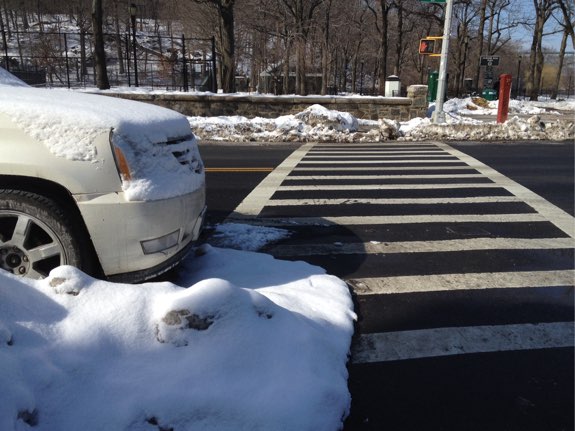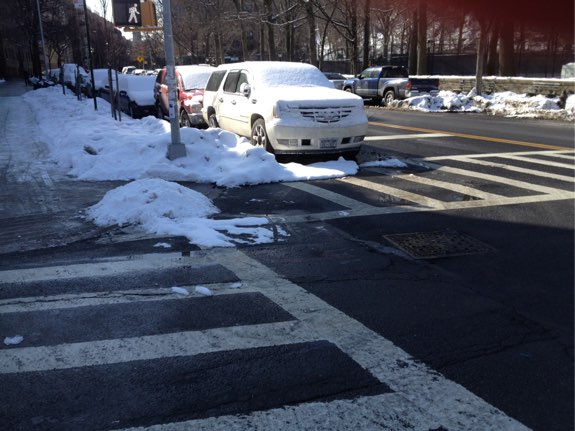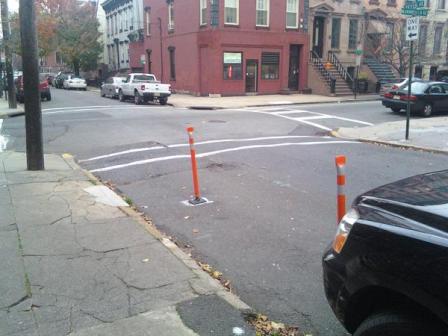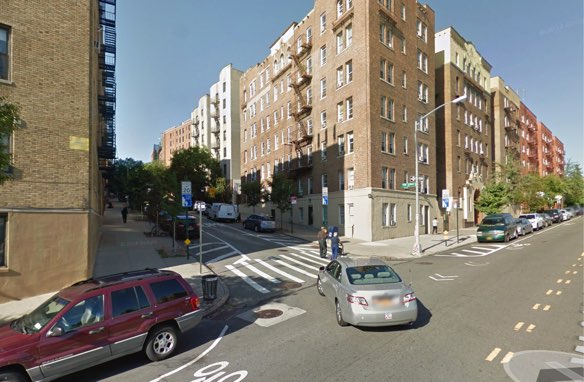
We've reported before how certain New York City parking rules are designed to cram a little more free car storage onto the street at the expense of pedestrian safety. In 2009, DOT removed parking restrictions on unmarked crosswalks at T intersections, and the city allows drivers with disability permits to block curb ramps that were intended to help pedestrians with disabilities cross the street.
Here's another example of how the city prioritizes parking over life and limb. This photo shows Seaman Avenue in Inwood where it intersects with Isham Street at the entrance to Inwood Hill Park. For at least five days this SUV was parked right at the edge of this crosswalk, blocking sight lines for pedestrians as well as drivers turning right from Seaman onto Isham.
Parking right up against the crosswalk is dangerous enough that some states and cities, including New Jersey and Portland, forbid it. Drivers hurt and kill thousands of people in New York City crosswalks every year, and most victims are crossing with the signal. Poor visibility at intersections contributes to the problem, but NYC law makes it perfectly legal to obstruct sight lines with parked cars.

NACTO guidelines suggest 20 to 25 feet of clearance around crosswalks. New York City law, however, only prohibits parking within a crosswalk itself (unmarked crosswalks at T intersections excepted, of course). By allowing motorists to park where their vehicles reduce visibility at intersections, this city traffic rule is in direct conflict with the city's Vision Zero goals.
The fix is simple. This month Vincent Gentile revived an effort by his City Council colleague David Greenfield to have the city paint curbs so drivers don't get tickets for parking too close to fire hydrants. If Gentile and Greenfield are as concerned about pedestrian safety as they are about protecting drivers from citations, they could introduce legislation to prohibit parking near intersections. Such a rule change would daylight intersections citywide and, if properly enforced, reduce the likelihood of collisions by making it easier for motorists and pedestrians to see each other.
Daylighted corners can be painted, protected with flex-posts, or used for bike parking. Below are examples of intersections that were made safer by the removal of a few parking spots.







